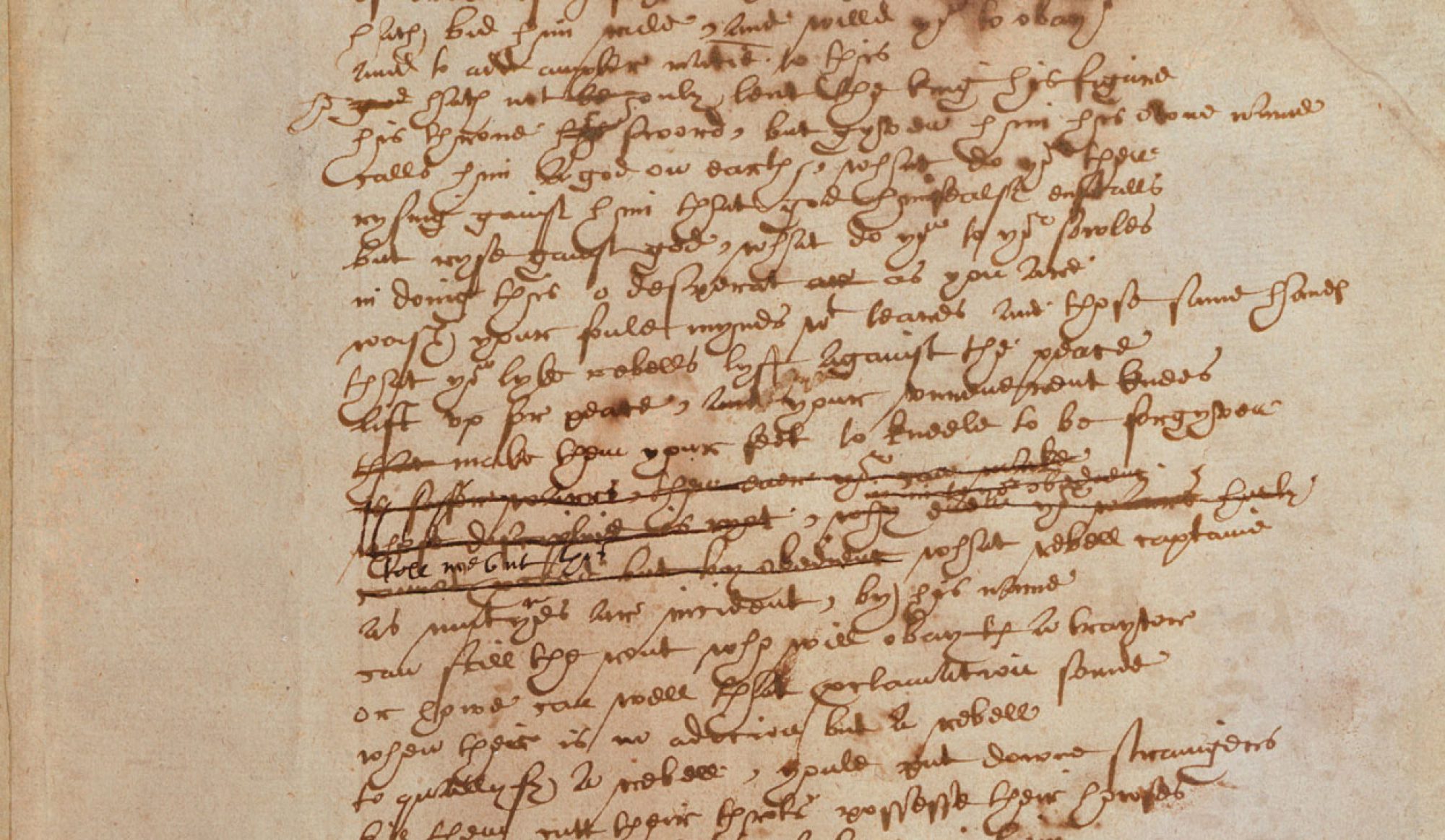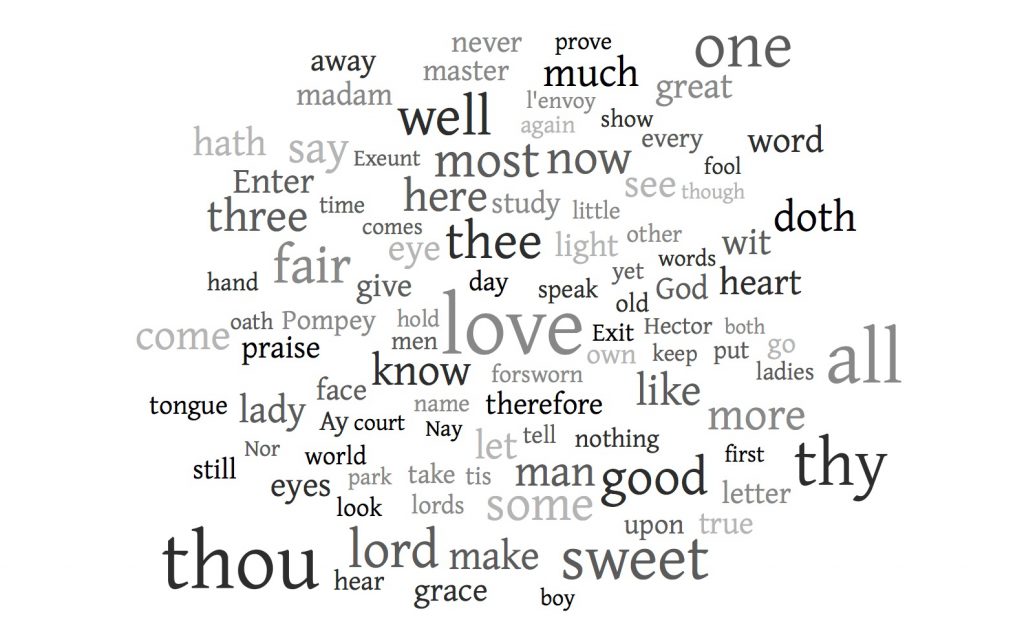There was an interesting line of discussion about the nature of character this week, which I would like to summarize by identifying two polar views with two people who advanced them—advanced them, I hasten to add, with more nuance, qualification, and speculative distance than I will allow here. One one side, Jeewon, who summarized some of Mieke Bal’s arguments about the constituent elements of a character-effect and asked, why does she retain the notion of character at all? Once we have resolved character into repetitions, accumulation, and relations with other characters, are we not free to adopt an alternative heuristic? One that does not put us in jeopardy of seeing, yet again, real people on the page? On the other side, Eli, who allowed as there might be something more to a character than what the text gives us, more history, more depth; in something like the way that we assume (even should assume?) there is more to a person we meet than the sum of our observations would allow us to know.
Maybe we have spent enough time together by now for you to recognize that it is characteristic of me not to try to resolve that question in one direction or another, but to wonder how we came to pose it for ourselves, and who we are that we find ourselves in the middle of it; what our motives might be for choosing an answer, as a commitment or at a given moment.
For us, in this class, the practical question is how these characters, or character effects, interact with the stylistic repertoire of the play. Can we reliably—Bal might say, predictably—associate a discrete set of stylistic devices with the language attached to particular speech tags? The discussion of Falstaff was a great test case for that, and there was much we discovered, his parataxis, his frequent repetition (he is copious, inventive in a technical sense, always foisting up new comparisons, but unconcerned with, or even contemptuous of, elegant variation), Will and others’ great comments on his if clauses, and so on (“and so on” of course including his characteristic diction and predilection for metaphors of the body etc.). But we also noted that his idiolect is adopted by others in the play, and arguably is introduced first in the mouth of Hal, performing for his friend’s pleasure. Mary brought us into the mock trial scene and the intricate experiment there of Hal and Falstaff imitating King Henry, and then Hal imitating Falstaff imitating King Henry and Falstaff imitating Hal imitating King Henry, or however it works. The digressions from this circuit are important, too; interesting, for example, that Falstaff as King Henry sounds so much like a schoolmaster, perhaps Holofernes. (Also like John Lyly.*) Grossly speaking—as Falstaff would have us do—there seem to be three possibilities:
1) Shakespeare’s success (in this play? in others?) lies in the idiosyncrasy of each character, how they all sound like themselves. Character is the primary site of style.
2) Character may be the primary site of style, but styles are mobile, passing from character to character by dynamics of imitation or perhaps infection etc.
3) Style is the primary site of style, or language is; characters are the more or less predictable, reliable avatars of styles to which they have no necessary relation. Or even: styles are the real characters.
The last raises the question, could one construct a style-plot alternative to the character-plot, that would follow the rising and falling fortunes of rival styles in a play? Elizabeth Fowler may help with thinking along these lines, if we substitute for her concept of “social person” something like “social styles”—so that the interest of a character arises from the collocation of a variety of styles that have antecedent meanings, but find, in the play, novel combinations. We can do a little of that based upon the internal evidences the plays give us, observing, for example, how Armado collocates the styles of the braggart soldier and the Petrarchan lover, Richard the styles of monarch and lyric poet, and so on.
Shakespeare must have been asking these same questions himself, no? For Hal seems to pose them so fundamentally, partaking of as many of the play’s different styles as he does—do they add up to a character? (He prefers the trope of contrast to combination, perhaps, as though his self-difference could be a matter of strategy; do we buy it?)
Also fascinating was a discussion of linguistic autonomy, the monologic vs. the dialogic. Jessica wondered if Falstaff might be the only character in the play who can truly speak to himself. Alex asked me, during the break, isn’t he always performing for Hal? Not quite always, but almost; and yet I think there’s something to what Jessica says (esp. the honor speech). At all events, the general question is one worth following, suggesting as it does a difference between speech that follows a single narrative, argumentative, or just expressive line, and speech that incorporates dialogic elements as it goes, especially hypophora. Paradoxically, a character of the first type may be more socially integrated; of the second, more isolated (insofar as internalized dialogic speech replaces actual dialogue). The question might touch some of our conversations, too, about speech as thinking. What kind of model of thinking is an inner dialogue? (To be thought about in this connection: the idea that Sarah introduced of imitating yourself, which is weird and provocative; is that what you do when you sustain a style?)
Let’s see—from the first part of class, also the interesting observation that the prose is, generally speaking, so much more memorable than the verse in this play, which often seems boiler-plate. (Certainly in King Henry’s mouth—if we credit him with full control of his idiom, it would seem he is out to project a kind of generalized high style, full of passing metaphor but little conceit or argument.) Hotspur is possibly an exception: he can go on, but he sustains a pretty high pitch of invention, and turns a nice conceit or two. We have a general repertory of stylistic descriptors for sentences, hypotactic, paratactic, periodic, and we will add to that in week 7.
The imitations this week were truly wonderful; the emphasis on the commerce between Falstaff and Hotspur was a revelation to me.
We talked a bit about other sites of style, besides character or passage: the author, the play as a whole (relative to other plays). As we go forward we’ll want to keep those questions in mind, since Shakespeare’s questions about what character is, how it works etc. only become deeper. When do we speak of styles in a play and when do we speak of the play’s style? What is the relation between the two? (At what levels does style discriminate?)
*As the Oxford notes will tell you, Falstaff as King H is patently “euphuistic,” in the idiom, that is, of John Lyly’s Euphues: The Anatomy of Wit (1579), a sensation in its time, by 1596 a little out of date. Here’s a passage to give you a feel for it: “He that toucheth pitch * shall be defiled, the sore eye infecteth the sound, the society with women breedeth security in the soul and maketh all the senses senseless. Moreover take this counsel as an article of the creed, which I mean to follow as the chief argument of my faith : that idleness is the only nurse and nourisher of sensual appetite, the sole maintenance of youthful affection, the first shaft that Cupid shooteth into the hot liver of a heedless lover. I would to God I were not able to find this for a truth by mine own trial ; and I would the example of others’ idleness had caused me rather to avoid that fault than experience of mine own folly. How dissolute have I been in striving against good counsel, how resolute in standing in mine own conceit ; how forward to wickedness, how froward to wisdom ; how wanton with too much cockering, how wayward in hearing correction. Neither was I much unlike these abbey-lubbers in my life (though far unlike them in belief), which laboured till they were cold, eat till they sweat, and lay in bed till their bones ached. Hereof cometh it, gentlemen, that love creepeth into the mind by privy craft and keepeth his hold by main courage.”


